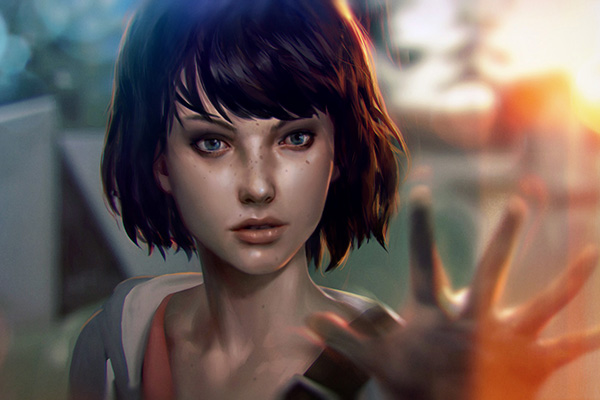Life is Strange
XBox One, 360, PS3, PS4, PC | Developed by Dontnod Entertainment
Life Is Strange is an episodic, story-driven graphic adventure game that centres around Max Caulfield, a (mostly) ordinary photography student attending high school in Arcadia Bay, Oregon. It’s hard to go into detail without giving away key plot points, but I will say there are a lot more mysterious goings-on than in your typical tale of high-school teen drama.
The game has been receiving a lot of hype lately, and with very good reason. It is absolutely gorgeous. Gorgeous in that “alty barista girl with eyeliner wings to compete against a Boeing” kind of way. The soft autumn glow illuminating life in the sleepy seaside town of Arcadia Bay gives the game a warm, nostalgic feel. This is only enhanced by a precious indie soundtrack, which occasionally washes in and out of the game — think a more serious Juno with less pregnancy and Michael Cera. Throw a handful of Stephen King-esque supernatural happenings in there, and you’ve got yourself a surprisingly engaging little story.
The story itself is where the real charm of the game lies. From the arty, introverted protagonist, Max, to arbitrary students wandering the halls, the characters breathe life into the game from the very start. High-school stereotypes are refreshingly averted — the popular kids aren’t strictly jerks, and the outsiders aren’t automatically cool and relatable. A good part of the game is spent walking around sticking your nose into other people’s business and finding out more about the individual characters. And, surprisingly, you find you actually care. The characters are diverse and dynamic while still managing to portray the classic in-group, out-group social dynamic found in high schools all around the world. And they come in all sorts of ethnicities and body types too, which enhances the feeling of being surrounded by “people” rather than “hired background extras”.
Gameplay-wise, it is very similar to Telltale titles such as The Walking Dead and The Wolf among Us. That is to say, it’s heavy on the cutscenes, light on the actually-doing-stuff. That’s not to say that it’s bad; in fact, those games are widely praised. The big difference between them and Life Is Strange is your ability to take back your choice, do something else and see how it pans out, which is important considering the entire game is built on the choices you make. This does not necessarily make it any easier, as you end up second-guessing and triple-guessing yourself on some pretty trivial things. Especially so as the phrase, “This action will have consequences”, appears frequently, which frankly should happen every time somebody entertains a really, really stupid thought.
Only the three-ish hour long first episode has been released, so I cannot guarantee quality of the next four. Episodic gaming is not necessarily a new thing — rudimentary versions of it existed in the 90s (eg DOOM). However, with more and more people opting for digital downloads and the continued success of Telltale, more story-heavy games have opted for this release model. It’s mutually beneficial: developers get money, which is in turn used to fund and refine future episodes. Additionally, you can try the first part to see how you like it, and if you don’t you will have spent a fraction of the cost of the full game. Not everybody is a fan though. There is a fair gap between initial release and completion, which means you have to wait a while if you prefer to blaze through games in one sitting — and by that point it’s “old” (not that freshness automatically makes things better, but you know how some people are).
I have high hopes for Life Is Strange. It feels like the kind of game that would stay with you long after your final playthrough. The storytelling so far has proved engaging, and there are plenty of subplots that leave you eagerly waiting for the next installment. For such a cheap price, it’s worth picking it up to see for yourself. And to find out who got that one girl up the duff. Scandal.



